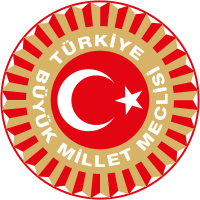
Photo from wikipedia
For a well-mixed population, we consider a threshold public good game where group members only obtain benefits from a public good if a sufficiently large number of them cooperates. We… Click to show full abstract
For a well-mixed population, we consider a threshold public good game where group members only obtain benefits from a public good if a sufficiently large number of them cooperates. We investigate the effect of an increase in the threshold on the level of cooperation that evolves. It is shown that for sufficiently large participation costs, the level of cooperation is higher for low and for high thresholds, than it is for intermediate thresholds - where in the latter case cooperation may not evolve at all. The counterintuitive effect where an increase in the threshold from an intermediate to a high one decreases the probability of cooperation, is related to the so-called common-enemy hypothesis of the evolution of cooperation. We further apply our analysis to assess the relative weight of different game types across the parameter space, and show that game types where either a small, or a large fraction of the population evolves as cooperators, receive more weight compared to game types where an intermediate fraction of cooperators evolves.
Journal Title: Scientific Reports
Year Published: 2020
Link to full text (if available)
Share on Social Media: Sign Up to like & get
recommendations!